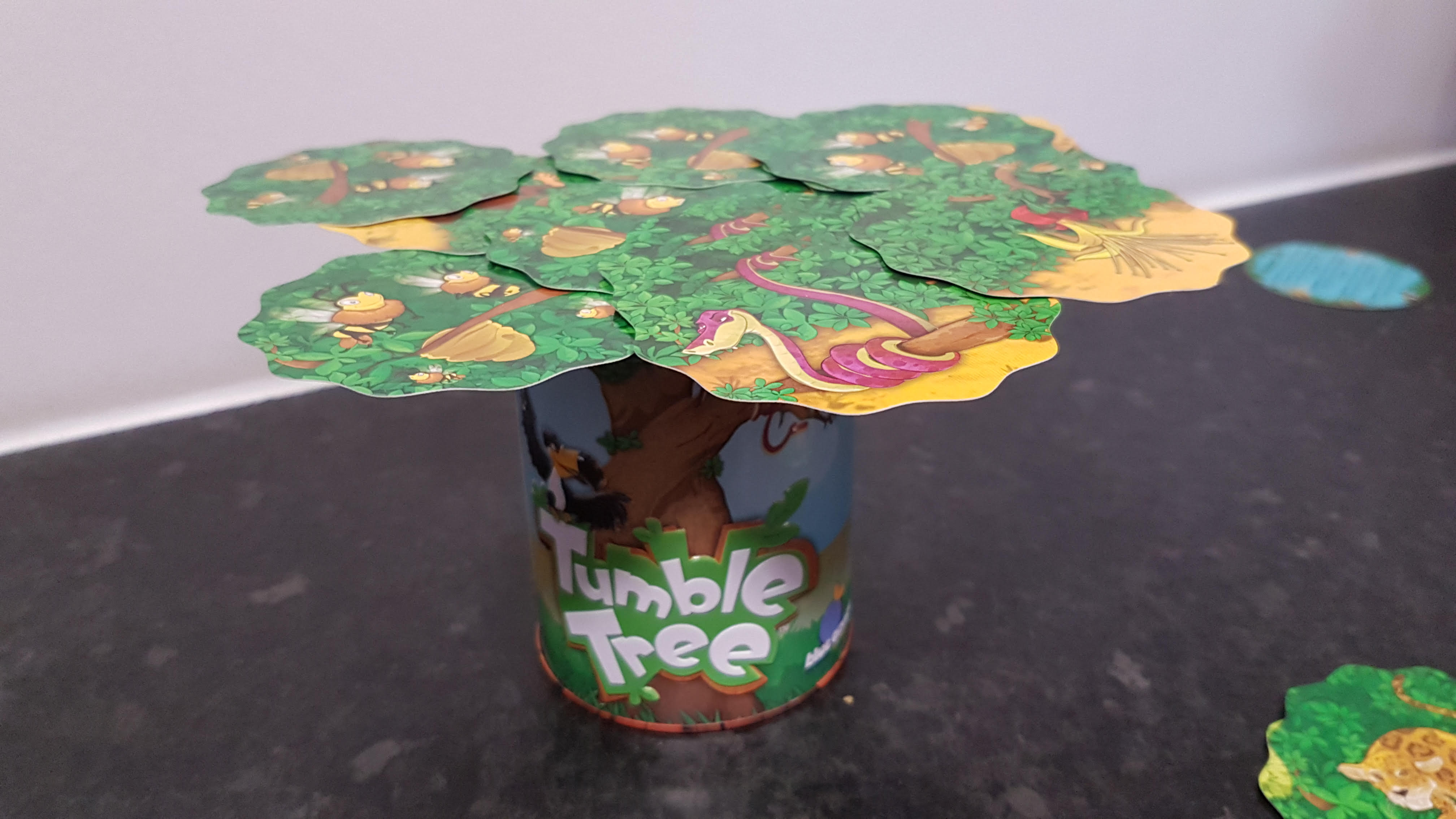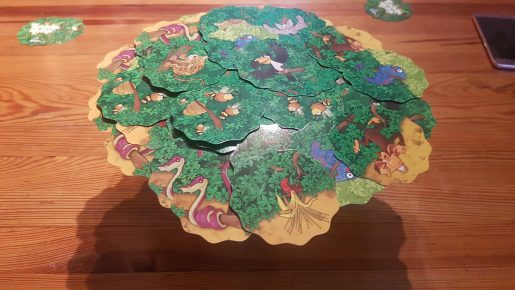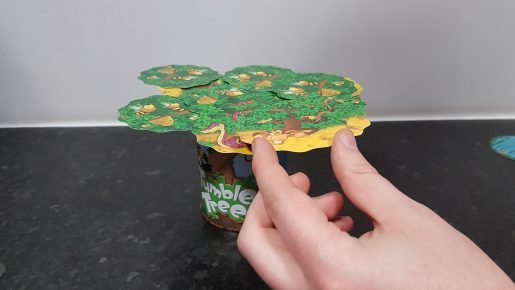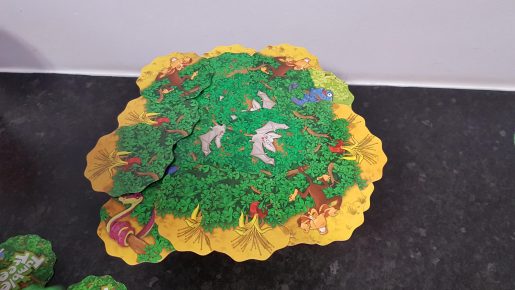Tumble Tree, previously known as Baobab, is a family orientated dexterity game from Blue Orange Games. Taking around 20 minutes to player, Tumble Tree sees 2 – 4 players balancing tree cards that feature animals and flowers on top of a tree trunk, that happens to be the game container. Fanning out the cards will give the game a distinctive look, just like the baobab tree the game is based upon. However, does the game let fun flourish or does it call come crashing down? Let’s find out!
Gamers will remove the tree cards from the metal container and then place it as a tree trunk into the centre of the table. The cards are shuffled and spilt evenly among players. On to turn players will initially declare if they will be placing 1, 2 or 3 cards onto the tree. They then must, no matter how detrimental it is to themselves, place that number of cards onto the tree. Each type of card has a unique rule that’ll see the tree fan out and massively overhang the container tree trunk.
Monkeys are placed at the edges so that their ground segment is over the edge of the current cards. Snakes are similar to monkeys, with a portion needing to overhang, but must be placed between two already played cards. Flowers are also like monkeys but are unsurprisingly not classed as an animal. Why is this important? Bees can be placed anywhere but afterwards animals cannot be placed directly on top of bees. Thankfully, foliage is on hand to help being able to be placed anywhere.
This is where the interesting animals come into play. Bats are not placed instead a player must drop the bat card from ~30cm above the tree with their eyes closed. Think that might be hard? Leopards again must start at 30cm, your eyes can be open but you must slam it down onto the tree, often causing cards to tumble. Toucans must be thrown on from 30cm away and the final card is a chameleon that mimics whatever the last played card was.
Once the number of cards a player declared are placed, play continues onto the next player and so on. If a player, at any point on their turn, causes cards to fall off the tree they are added to that player’s personal discard pile. The game continues until one player has run out of cards to play, not including any collected into a discard pile. Everyone at this point then counts the cards left in front of them, both ones not placed and in their discard pile. The player with the fewest cards wins!
While the rules for the animals are simple there is slight ambiguity in if leopards, toucans or bats that aren’t exactly placed can cover bees. While the rule says no animal can cover a bee sometimes carefully trying to remove a card is harder than placement and also it slows the game down considerably. For the sake of speed, I’ve veered towards bees not counting for these animals but this could be wrong, and classed as a house rule.
Tumble Tree comes in a relatively small, though slightly oddly shaped, metal container; making it great for transporting around. There is some room for cards to rattle inside despite the container not being much bigger than a pot noodle. This isn’t a major issue though as even after some purposeful, heavy-handed shaking none of the components showed any signs of wear and tear. The tree cards have a glossy finish that makes them slide around a bit when placing. While this would normally be a negative in a game where the slightest slide on the top of the tree could cause a tumble, it only grows the tension – especially when throwing the toucan onto the top. The slightest movement will see players hold their breath, gasp or cheer as cards almost magically stay on top or crash down to the table.
When you first deal out the cards to each player, especially in a low player count game, it is hard not to see the game dragging due to the huge pile in front of you. However, once cards start to get placed these piles will soon decrease. In an almost one-upmanship fashion as the game progresses, even if it seems like a crazy decision, players will continually go for the full 3 cards to place, striving not to be out done while pushing their luck to the limits.
Depending on the group it can be helpful if one player takes up the role of card caller. This person then calls out how a card must be placed whenever a card is turned over. This way players can just get stuck in, they don’t need to worry about forgetting what this or that card does and most importantly keeps the speed up. Tumble Tree works best when turns zoom around the table. When everyone knows what the cards do the tempo increases and gets the game to the stage where cards will be tumbling quicker, enhancing the fun factor.
Tumble Tree doesn’t hide behind anything, the box is as much a part of the game as the 108 cards inside. While it may not look like much, there is a great amount of entertainment to be had. Whether you’re playing with friends, at a family gathering family or with work colleagues looking for something super light-hearted at a lunch break, the game never fails to bring smiles to players faces. Somehow this is even the case when someone causes a shower of cards to cascade down from the top of the tree. For this reason, let alone the production quality, Tumble Tree has earnt its space on my gaming shelf!
[Editor’s Note: Tumble Tree was provided to us by Blue Orange for review purposes.]




